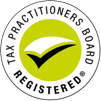This article contains a summary of the key tax changes in the 2011 budget that impact on small businesses. As always, there are winners and losers. A small business for tax purposes is defined to have a turnover of less than $2 million GST exclusive.
Immediate deduction for asset purchases
Small business will obtain an instant write-off for the first $5,000 GST exclusive cost of any motor vehicle purchase.
The balance of the purchase price can be allocated to the general small business depreciation pool and depreciated at the rate of 15% in the first year and 30% in subsequent years.
This concession for vehicle purchases mirrors the previously announced instant write-off for all assets costing less than $5,000 GST exclusive.Currently small businesses can claim an instant deduction for all assets costing less than $1,000 GST exclusive.
These measures will replace the entrepreneur’s tax offset and will not immediately benefit small businesses with tax losses.
Date of effect: 1 July 2012
FBT statutory rate method for employer provided cars
There are currently 2 methods for valuing car fringe benefits, the “statutory formula” method and the “operating costs” method. The method is most widely used and operates on a per-car basis by applying a statutory percentage to the base value of the car. The percentage varies depending on the total number of kilometres travelled in the FBT year. The rates are:
- 26% – where total kms travelled are less than 15,000
- 20% – where total kms travelled are between 15,000 and 24,999;
- 11% – where total kms travelled are between 25,000 and 40,000;
- and7% – where total kms travelled are more than 40,000.
The government announced that the above statutory formula 4-percentage rate scale method for valuing car fringe benefits will be replaced with a single statutory rate of 20% regardless of the number of kilometres travelled
The single flat 20% rate will benefit cars travelling less than 15,000 annual kilometres by resulting in reduced FBT. For those driving between15,000 and 25,000 annual kilometres, there will be no change (the rate remains at 20%).
Where the car travels between 25,000 and 40,000 annual kilometres, the rate will rise from 11% to 20% over 3 years. For those driving more than 40,000 annual kilometres the rate will rise from 7% to 20% over 4 years.
The impact of these changes is that many employers will revert to the more favourable operating cost method for cars travelling more than25,000 kilometres a year where there is substantial business use. This method requires the employee to keep a log book for a consecutive 3 month period every 5 years.
Date of effect:
The changes will apply to new vehicle contracts entered into after 7:30pm (AEST) on 10 May 2011 and will be phased in over 4 years as follows:
| Kilometres travelled during FBT year | Existing contracts (%) | New contracts from 10 May 2011 (%) | New contracts from 1 April 2012 (%) | New contracts from 1 April 2013 (%) | New contracts from 1 April 2014 (%) |
| 0-15,000 | 26 | 20 | 20 | 20 | 20 |
| 15,000-24,999 | 20 | 20 | 20 | 20 | 20 |
| 25,000-40,000 | 11 | 14 | 17 | 20 | 20 |
| 40,000+ | 7 | 10 | 13 | 17 | 20 |
Cut to company tax
The company tax rate for small businesses will decrease from 30% to 29%.
Date of effect: 1 July 2012
Low income tax offset for minors
For the 2010/11 year, minors (i.e. children under the age of 18 at 30 June) can receive investment income (including trust distributions) of up to$3,333 without paying tax due to the low income tax offset.
Minors (i.e. children under 18 years of age) will no longer be able to access the low income tax offset to reduce tax payable on their unearned income, such as dividends, interest, rent and royalties. This is designed to discourage income splitting between adults and children especially distributions to minors from family trusts.
It is likely that the previous tax free threshold of $416 for unearned income of minors may be reinstated.
Income that minors earn from work will continue to continue to be eligible for the full offset.
Date of effect: 1 July 2011
Concessional superannuation contributions caps
Concessional contributions include employer contributions (those made under salary sacrifice arrangements and super guarantee contributions)and personal contributions claimed by individuals.
Since the 2009/10 year, the concessional contributions cap” has been fixed at $25,000 (or $50,000 for those aged 50-74 until 30 June 2012)
The government has proposed to allow individuals aged 50 and over with less than $500,000 in total super balances to continue to contribute up to $50,000. Other individuals will be subject to the $25,000 threshold regardless of age.
Date of effect: 1 July 2012
Reduction in PAYG instalments
The Government will reduce PAYG tax instalments for taxpayers using the gross domestic product (GDP) adjustment method for one year.PAYG instalments in 2011/12 will be set at 4% above the taxable income for the previous year, half the normal statutory rate of 8% that would otherwise apply.
This change does not apply to taxpayers who calculate their PAYG instalments based on the instalment rate notified by the ATO. These will automatically adjust when the given rate is applied to actual income for the quarter.
The GDP adjustment method is used by the overwhelming majority of small businesses required to pay quarterly income tax instalments.
Date of effect:
This is a one-year benefit for the 2011/12 year and the statutory rate will apply as normal from the 2012/13 year.




